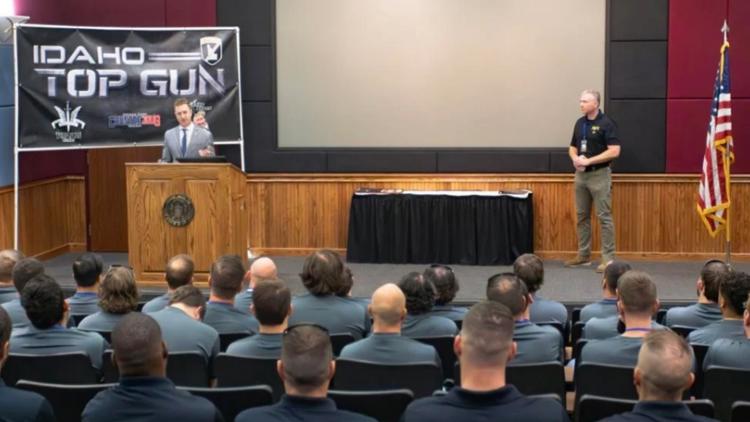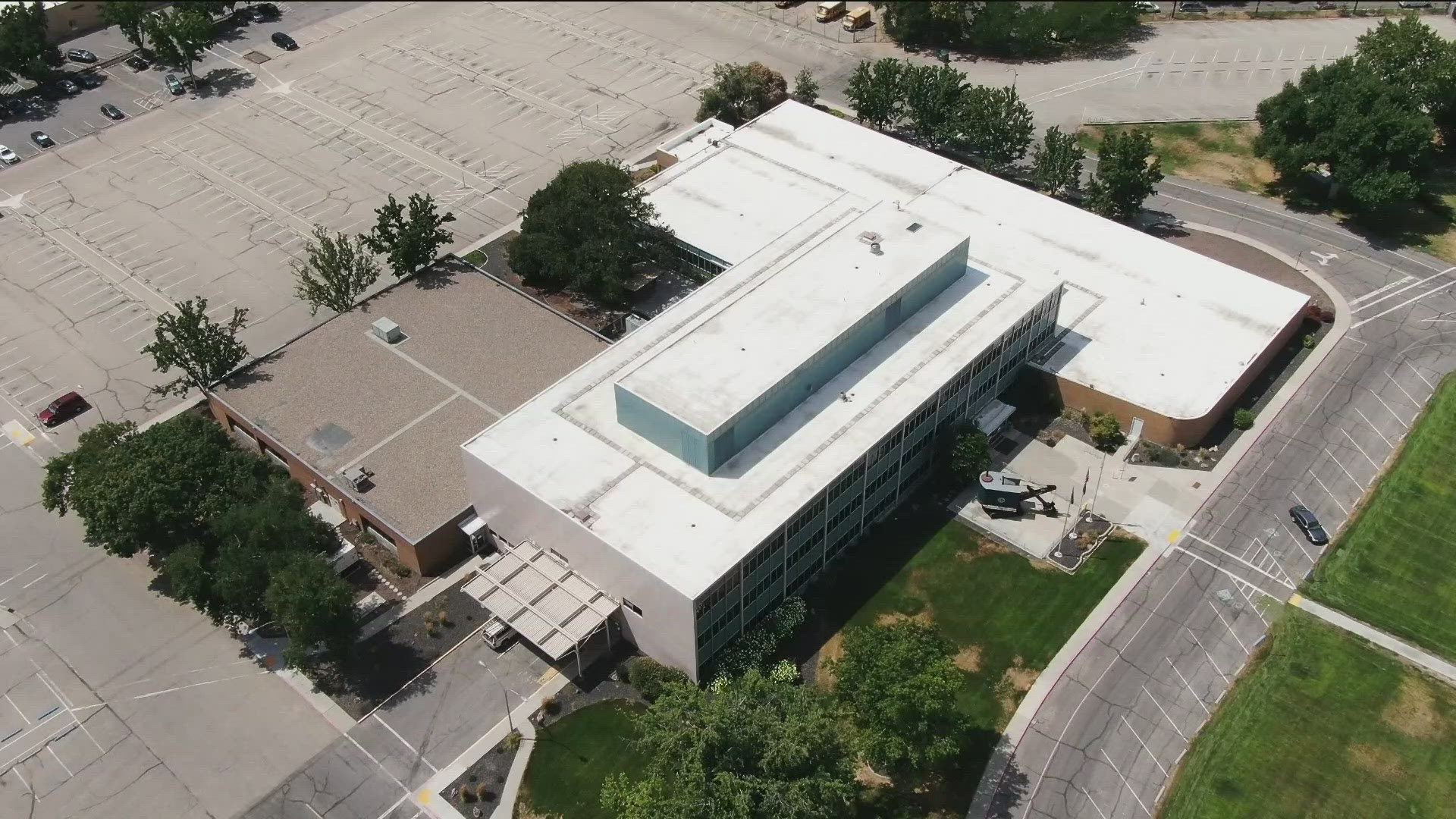BOISE, Idaho — This story originally appeared in the Idaho Press.
This year marks the third iteration of the “Top Gun” Narcotics Investigation Course, a week-long training that replaces a prior narcotics program that had been held for about two decades prior.
Through emphasizing proactivity in law enforcement and providing legal knowledge, the course looks to give investigators the training needed to curb drug use that has grown increasingly deadly in Idaho.
The training, hosted by the National Guard and Idaho State Police at Gowen Field, provides lectures and scenario-based instructions for attendees, according to a press release on the course.
“As the times have changed, drug crimes have also changed and evolved, and we saw a real reason for us to get together and collaborate with our partners from across the United States,” Jess Stennett, Idaho State Police lieutenant, said.
Nearly 40 individuals from Idaho’s sheriff offices, municipal police departments and ISP troopers will be participating in the training. Out-of-state agencies including the Oregon State Police and Montana Department of Criminal Investigations also had participants in the training. With personnel from in and around the state of Idaho, the hope is that the course, in addition to refining skills in the realm of drug investigation, will provide a networking opportunity for law enforcement in the region that can be called upon in future investigations, John Kempf, co-coordinator of the Idaho Fentanyl Education Project, said.
Most law enforcement work is reactive: responding to calls for myriad issues. Through the course, law enforcement is taught to shift to proactive policing through instruction on investigative and information-gathering techniques in an effort to piece together the “spiderwebs” of the drug trade running both within and through Idaho, Stennett said.
“This teaches us how to go out and actually go big-game hunting and go find those who really do harm to our communities,” Bill Gardiner, ISP colonel and director, said.
Through the course’s involvement of deputy prosecutors from Latah and Canyon counties as well as the U.S. Attorney’s Office, an emphasis on proactivity is also being brought to the court system.
“We’re looking at taking out the networks of drug dealers — that often originates right down by the border — with federal tools,” said U.S. Attorney for the District of Idaho Josh Hurwit. “But with your hard work, and your education, your training, we can actually make a huge difference and get down to the sources of supply and keep our communities safe.”
For the U.S. Attorney’s Office, methamphetamine has been the most common drug in their cases for decades. Over the past seven years, however, fentanyl cases have grown to be “essentially equivalent” to methamphetamine and the drug is often sold by the same dealers, Hurwit said.
“We don’t do anything alone … the vast majority of our cases involving narcotics in this state at the federal level are based on a state, local and federal partnership,” Hurwit said. “That’s why we’re so invested in Top Gun.”
Hurwit pointed to a number of successful prosecutions in Idaho in the prior year surrounding fentanyl trafficking, including a 20-year federal prison sentence for a defendant trafficking 20,000 fentanyl pills, achieved through a coordinated effort with the Metro Treasure Valley Violent Crimes Task Force.
The sentences mentioned by Hurwit came shortly before Idaho Gov. Brad Little signed a bill in February creating mandatory minimum sentences for fentanyl possession. Those arrested in Idaho with at least 4 grams of fentanyl, or any mixture of substances containing a detectable amount of fentanyl, now receive a minimum sentence of three years in prison and a $10,000 fine, as previously reported by the Idaho Press.
In addition to increasing the focus on prosecuting drug trafficking, Idaho is also working to educate and inform about the dangers of fentanyl through programs targeting youth and young adults.
“It’s fair to say that it continues to feel like we are navigating an unprecedented territory,” said Marianne King, director of Idaho’s Office of Drug Policy. “As you know, substance misuse has never been riskier or more lethal than it is today.”
Though the United States saw a decline of 3% in the number of reported overdose deaths between October 2022 and October 2023, Idaho’s “fentanyl-involved” overdose deaths increased by 4.5%. The most recent data for Idaho from the Department of Vital Statistics found that 386 people died from drug overdoses in 2023, King said.
“Of those 386, 264 were related to opioids,” King said. “Of those 386, 197 were related to fentanyl. That’s 51%.”
Additional concerns arise when considering the demographic trends in overdose deaths. While persons aged 35 to 44 continue to experience the highest rate of overdose deaths, those aged 15 to 24 are “experiencing the greatest percentage increase in fatalities,” King said. Though fatal overdoses were up in 2023 for the ages of 15 to 24, from 31 in 2019 to 36 in 2023, they are down from the five-year peak of 42 deaths in 2022, according to the Idaho Department of Health and Welfare website.
Through programs like “Fentanyl Takes All,” which launched in 2022, there have been some positive trends observed in younger demographics when it comes to fentanyl education and awareness. The majority of Idaho teens, young adults and parents now report knowing that counterfeit prescription drugs can contain “deadly amounts of fentanyl” and more people in each group acknowledged that “it’s almost impossible to tell if a substance contains fentanyl or not,” King said, citing the most recent numbers from the campaign.
Though progress continues to be made in the areas of training, prosecution and education, drug trafficking, and fentanyl trafficking specifically, continues across the state and country at a significant human cost. For dealers, traffickers and manufacturers, it’s just good business, Stennett said.
“It is truly a business for them,” he said. “It’s a billion-dollar business, and they will go to no end to sell their products.”
This article originally appeared in the Idaho Press, read more on IdahoPress.com.



